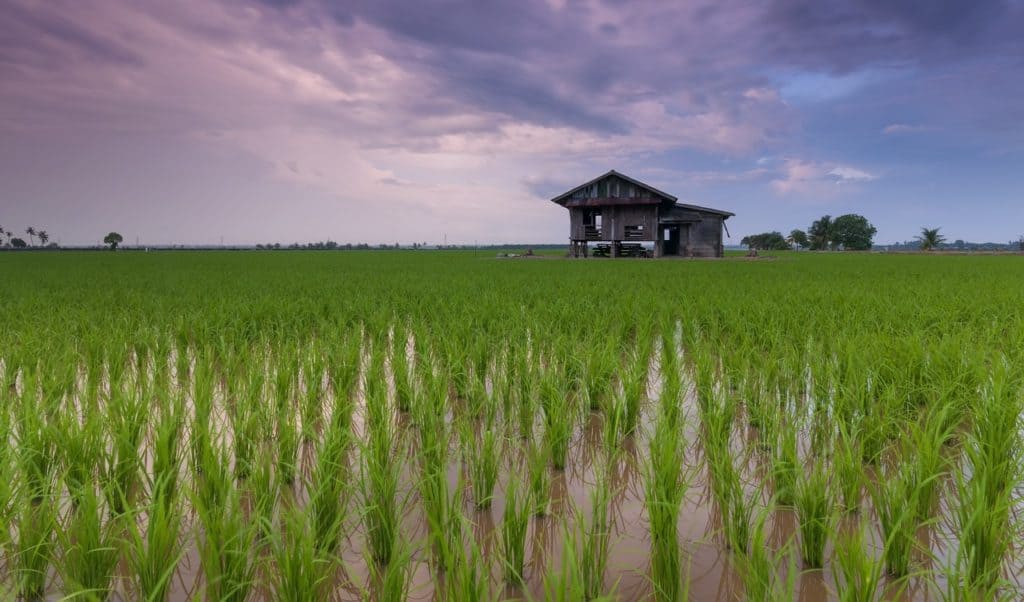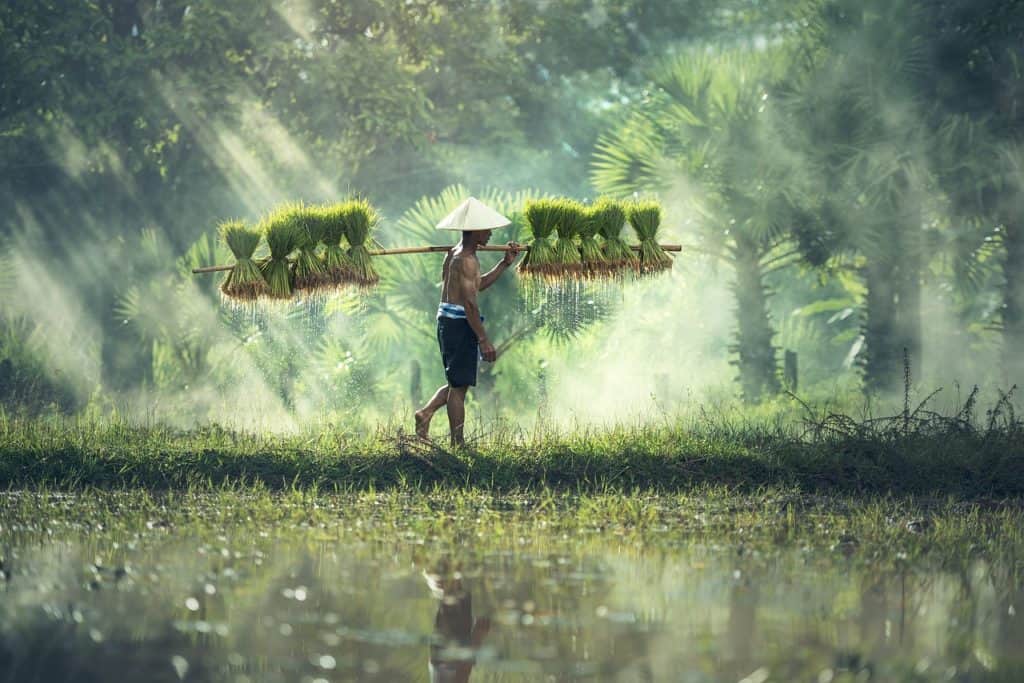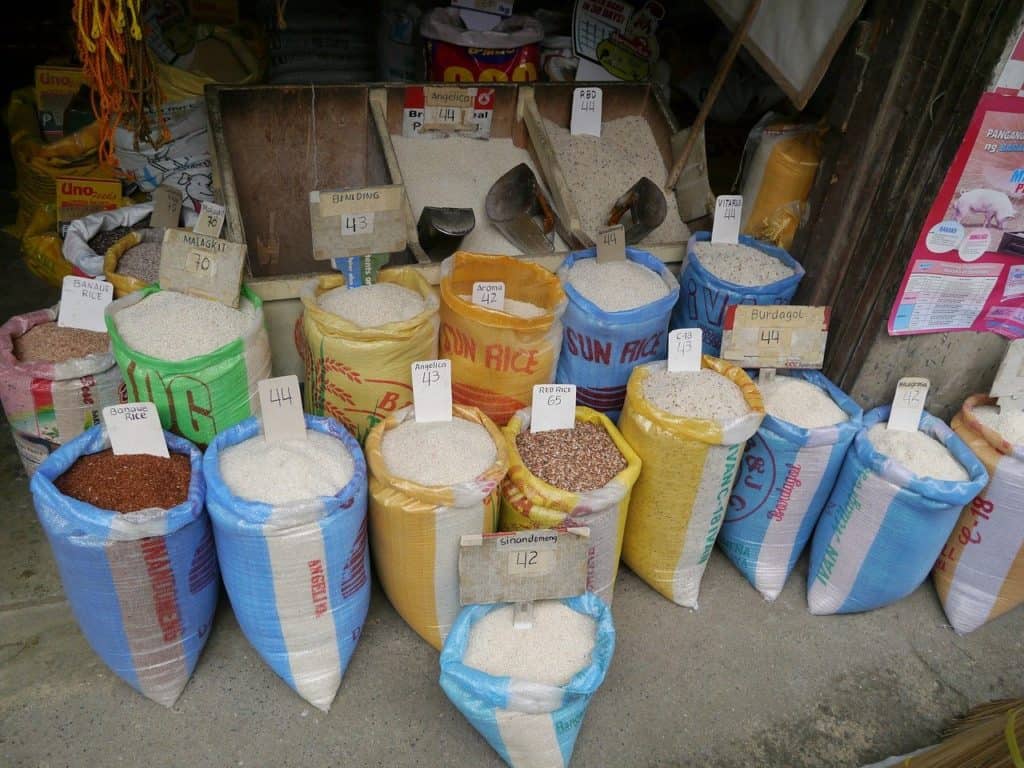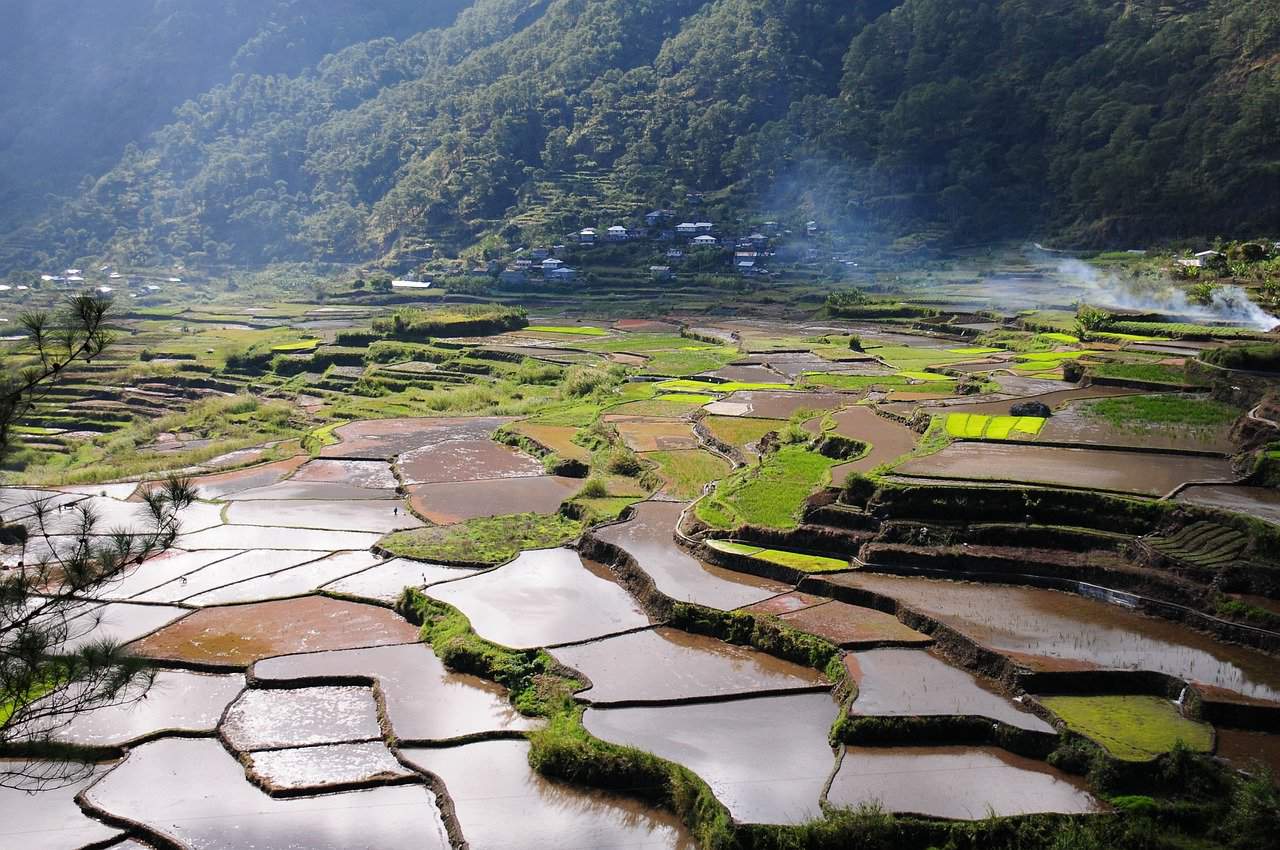There are at least 40,000 varieties of rice on planet earth. Think about that for a minute-40,000! I’m not sure you or I could experience all that rice in a lifetime. It sure would be fun to try! I’m excited to try basmati.
The oldest evidence of rice comes from 4 grains of rice found in the Yuchanyan Cave in China, dating back almost 10,000- 12,000 years. It is thought that rice was first domesticated in China and then moved to other areas, in particular, India and Pakistan.
How and where

Rice was thought to only grow in very wet climates that received a large amount of rainfall. But rice can actually grow on any continent except Antarctica. Rice does require a great deal of water, so proper water irrigation or being planted in clay soil is optimal.
Most of the pictures we see are of rice growing in Asia. The rice paddies are beautiful to look at, especially the terraced paddies. Simply stunning! Rice is also grown in flooded rice fields using traditional practices dating centuries back.
The fourth-largest rice-producing countries are China, India, Indonesia, and Bangladesh. China is the world’s largest producer of rice. China also developed the first hybrid rice.
Wait! What?
I was shocked to learn that Arkansas, California, Louisiana, Missouri, and Texas are the top producing rice states in the United States. Here is a great website to go check out about how California rice grows: https://calrice.org/industry/how-rice-grows/. Who knew they seed the rice from an airplane?!
Types of rice

There are three main “types” of rice. We will start off with long grain rice. Long grain rice is dry rice (not sticky), distinct in flavor and aroma. Two examples of long-grain rice are basmati and jasmine.
Basmati and jasmine rice require more “care” in preparing. Rinsing basmati and jasmine is highly recommended to help remove the starch in the rice thus a drier consistency.
Short grain rice is known for its high starch, therefore the rice is sticky. Examples of this type of rice are Japanese short-grain, bomba, Chinese black rice, and short-grain glutinous rice. This type of rice is eaten by hand or with chopsticks.
Medium grain rice is a moist creamy rice minus the starch. A fine example of this is risotto. This rice is cooked slower to release its creaminess. A great benefit with eating medium grain rice is that it doesn’t leave a sticky feeling in your mouth.
My basmati adventure

A rice variety that recently caught my eye was basmati rice. I had heard of basmati before and tried it a few months back. I wasn’t initially impressed, but I decided to go ahead and just buy a bag and try it again.
It really helps to follow the directions on how to make the rice. In general, I never seem to make rice the same twice. It always is too wet or I’ve burnt it. So when I decided to buy some basmati I was going to get cooking it right the first time. GRR!
Get your boil on!
Right out of the gate I hopped onto YouTube and began watching different videos. My favorite was Meredith Laurence, Blue Jean Chef. Meredith has a wonderful way of making you feel relaxed. I was surprised to find that you first have to rinse the rice 4 times or till the water runs clear, followed by a 20-minute soak in water. Hmm, this is different.
After the rice has soaked for 20 minutes you will measure out an equal amount of water to soaked rice (2 cups soaked and drained rice=2 cups of water). Place water and drained rice in a saucepan, give it a little stir to distribute the rice and water evenly. Then turn on the heat, add 1 tablespoon butter and about 1/4 tsp salt. Bring it to a boil and then turn the heat down, cover, and simmer for 10 minutes. DO NOT TAKE OFF THE COVER. After 10 minutes the water should have disappeared and you can take the cover off and give it a fluff.
Boil, fluff, repeat
On my first try, I made basmati perfectly! The basmati rice was so fragrant, and it has a pleasant nutty taste. The rice tripled in length and was very fluffy. By the way, basmati means fragrant!
Resource:
- https://www.upgrademyfood.com/which-rice-is-best-for-a-diabetic-glycemic-index-analysis-part-1/
- https://www.nonnabox.com/types-of-rice/
- https://www.bonappetit.com/story/types-of-rice
- https://www.thoughtco.com/origins-history-of-rice-in-china-170639
- https://www.worldatlas.com/articles/largest-rice-producing-countries.html

Michele Bruxvoort is sure to draw you in with her delightful sense of humor and love for living life. She enjoys reading, repurposing, as well as remodeling the family home with her husband. Drawing from her life experience as wife, mom, and follower of Jesus, Michele brings you a very honest and real perspective on life. When you don’t find her writing, you can find her mowing lawns, stocking shelves, taking care of her grandbaby and tackling her latest life adventure.
Wisconsin native and empty-nester, she now makes her home with her husband of 27 years in the South West Prairie plains of Minnesota.

